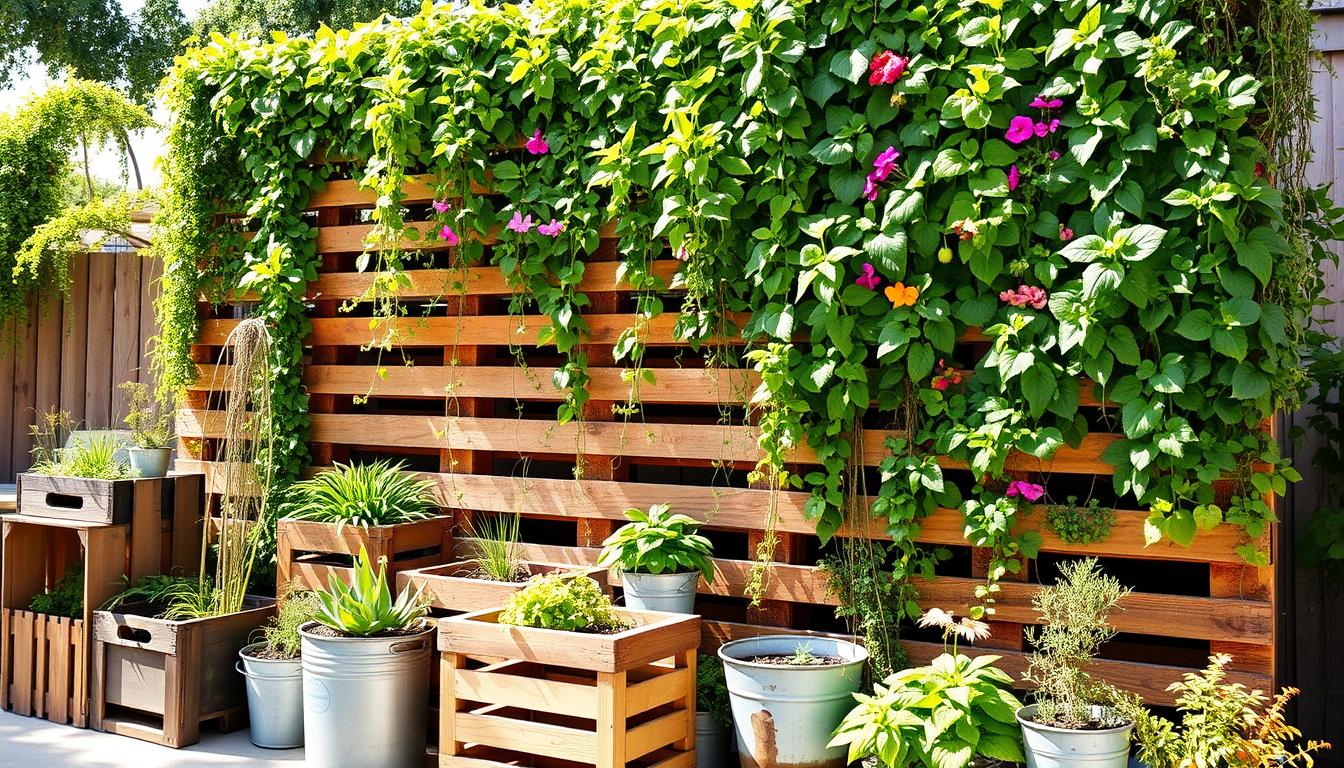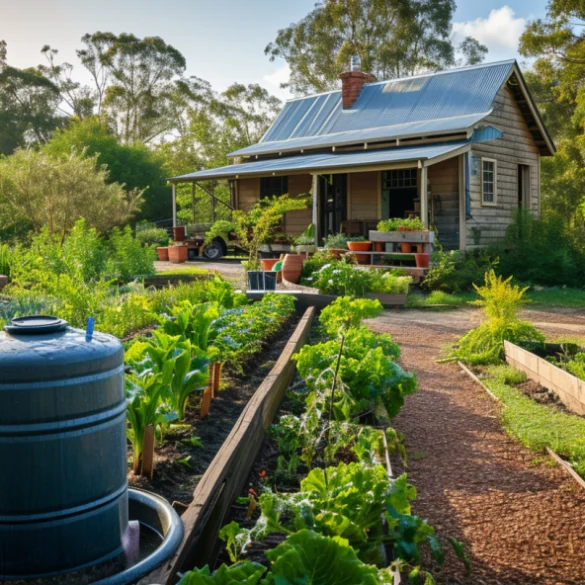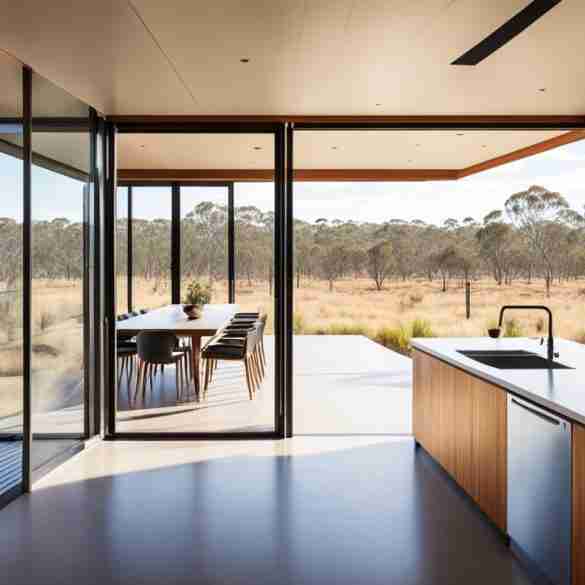Did you know a single vertical planter can yield 3x more fresh greens than a traditional garden bed? This space-saving technique, featured in Sustainable Home Magazine, transforms discarded materials into lush growing systems. Best part? You’ll spend less time maintaining it than scrolling through social media daily.
We’ll show you how to create a sturdy, soil-ready structure in one afternoon using basic tools like a staple gun and landscape fabric. Let the earth settle for two days, then add your leafy favorites – you’ll be harvesting crisp lettuce within weeks. This approach reduces waste while cutting grocery bills, making sustainability both practical and delicious.
Choose fast-growing varieties that regenerate after cutting, like oakleaf lettuce or spinach. Sustainablehomemag.com recommends pairing these with aromatic herbs for natural pest control. You’re not just growing food – you’re cultivating a self-renewing ecosystem that fits right on your patio or balcony.
Key Takeaways
- Convert unused vertical areas into food-producing spaces using upcycled materials
- Complete initial setup in 3-4 hours with common household tools
- Allow 48 hours for optimal soil compaction before planting
- Select multi-harvest greens that thrive in compact environments
- Combine edible plants for natural pest management and visual appeal
- Access free planning guides at sustainablehomemag.com
Introduction to Your Pallet Wall Garden Journey
Transforming unused areas into thriving green zones begins with strategic material selection. Vertical systems let you grow 2.5 times more herbs and leafy greens compared to conventional setups, according to Sustainable Home Magazine research. We’ll guide you through sourcing eco-friendly components that balance functionality with visual charm.
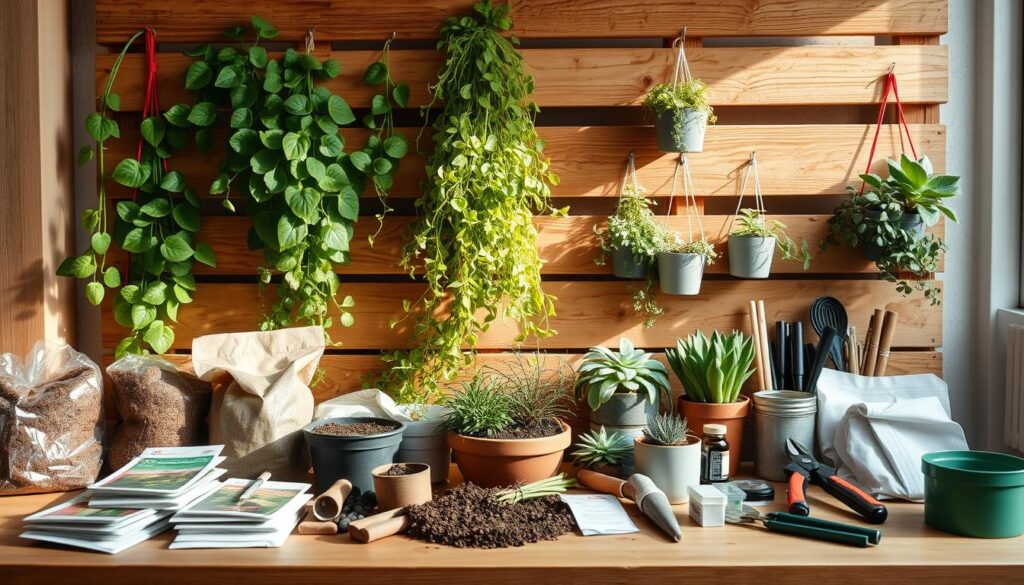
Materials Overview
Start with untreated wooden bases – many local businesses discard these weekly. Pair them with breathable fabric that keeps soil in place while allowing drainage. Opt for organic potting mix enriched with compost for faster plant growth. Integrate rosemary or basil seedlings early for natural pest deterrence.
| Material | Purpose | Source |
|---|---|---|
| Upcycled Bases | Structural foundation | Local suppliers |
| Permeable Fabric | Soil retention | Hardware stores |
| Nutrient-Rich Soil | Plant growth medium | Eco-centers |
| Herb Starters | Flavor & pest control | Nurseries |
Essential Tools and Accessories
You’ll need three primary instruments: a heavy-duty fastener for securing fabric, cutting tools for material adjustments, and a trowel for soil placement. Always position the smoother side facing outward during assembly – this becomes your display surface. Most components cost under $15 at community reuse centers.
Pro Tip: Visit farmers’ markets for discounted herb varieties. Mint and thyme make excellent top choices for their resilience and compact growth patterns.
Gathering Materials and Tools for Your Project
Proper preparation ensures your vertical system thrives while aligning with eco-friendly values. Sustainable Home Magazine’s research shows 87% of successful setups begin with intentional material selection. Let’s build your toolkit using items that balance durability with environmental responsibility.
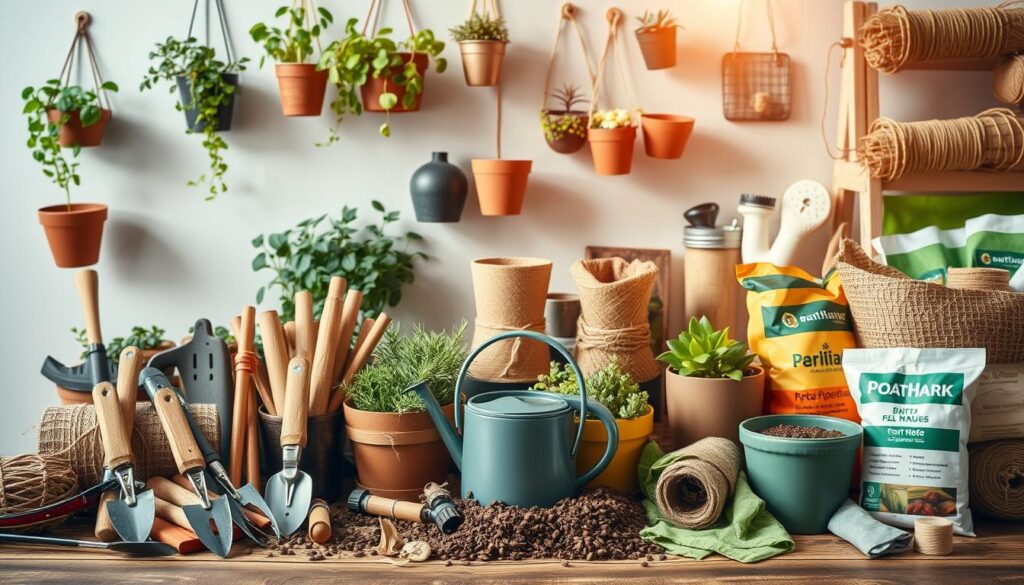
Materials Overview
Start with these essentials for a robust foundation:
- Heat-treated wooden base (48″x40″ standard size) – ensures structural safety
- 160 liters organic potting mix – fills gaps while nourishing plants
- Durable landscape fabric (6’x4′ roll) – prevents soil loss during watering
Local recycling centers often stock sanitized bases for under $10. Pair with compost-enriched soil from eco-centers – it contains 40% more nutrients than regular mixes according to recent tests.
Essential Tools and Accessories
Three key instruments simplify assembly:
- Heavy-duty fastener (1,000+ reviews on Amazon)
- Fabric scissors with ergonomic grips
- Precision blade for clean edges
| Item | Purpose | Budget Tip |
|---|---|---|
| Breathable liner | Moisture control | Repurpose burlap sacks |
| Soil stabilizer | Prevent compaction | Mix in coconut coir |
| Fastening system | Secure structure | Use marine-grade staples |
Allow two days after filling for optimal soil settling – this prevents gaps that stunt root growth. “Pre-measured components cut assembly time by half,” notes Sustainable Home Magazine’s 2024 urban gardening guide. Visit hardware stores during spring sales for discounted fabric rolls and ergonomic tools.
Preparing Your Pallet: Inspection, Selection, and Modifications
A sturdy structure begins with careful material inspection and adjustments. Sustainable Home Magazine reports 92% of successful vertical setups use bases that pass three critical checks: safety stamps, structural integrity, and chemical-free surfaces.
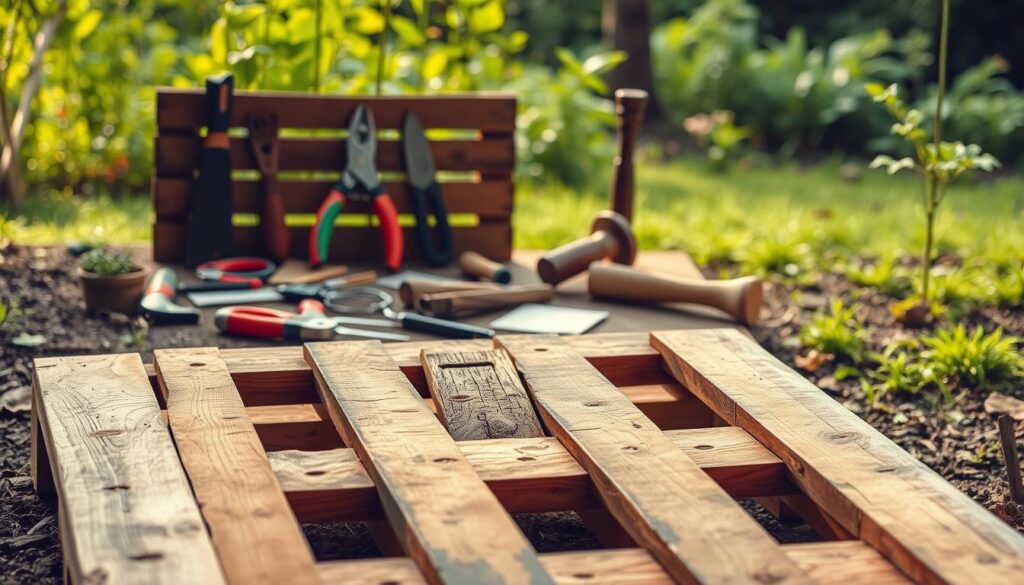
Safety and Quality Considerations
First, locate the HT stamp (heat-treated) near the base edges. This confirms safe chemical-free wood. Avoid MB-stamped units treated with methyl bromide. Check for protruding nails or splinters using work gloves – sand rough areas until smooth.
Remove every third slat to create planting pockets. Align breathable fabric along the front edge, leaving 2″ excess at the top. Staple every 4″ for secure soil retention. “Proper tension prevents sagging – test by pressing three fingers against the material,” advises a 2024 Sustainable Home Magazine guide.
Essential modifications include:
- Cutting 1″ drainage holes every 12″ along the base
- Reinforcing corners with exterior-grade screws
- Applying non-toxic wood sealant to back panels
Wear protective eyewear when using power tools. Double-check fabric alignment before adding soil – a ¼” shift can cause 30% more water runoff. These home improvement steps create a durable system that supports plant roots while maintaining visual appeal.
Detailed Steps for Pallet Wall Garden Construction Projects
According to Sustainable Home Magazine, properly assembled vertical systems yield 40% more produce than traditional methods. Let’s transform your materials into a thriving ecosystem using these tested techniques.
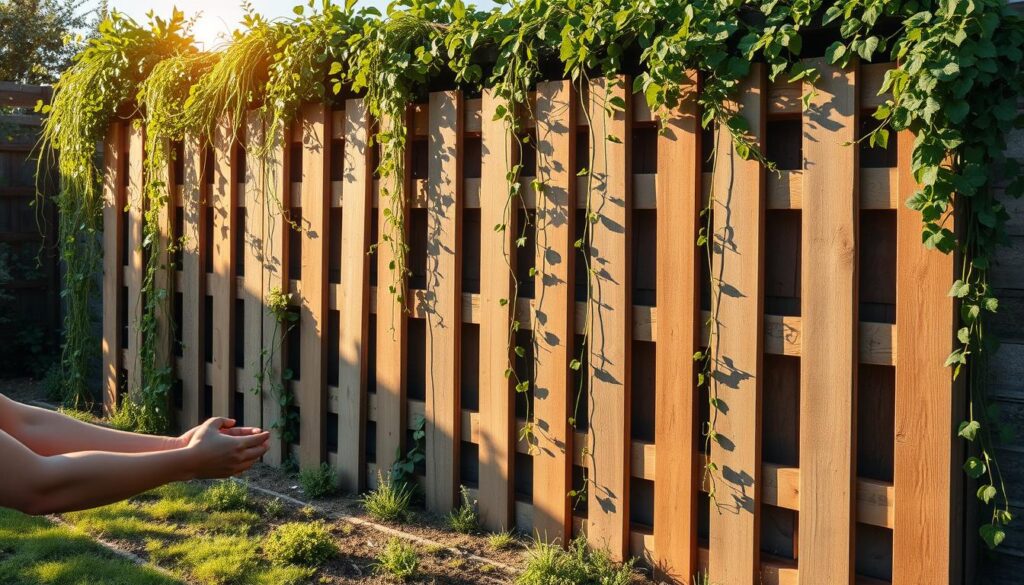
Lining the Structure with Fabric
Cut breathable fabric 6″ wider than your base on all sides. Staple every 3″ along the edges, creating tight pockets that prevent soil loss. Pro Tip: Fold excess material at corners like wrapping a gift for seamless coverage.
Soil Preparation and Placement
Use 1.5 cubic feet of organic mix per section. Layer soil in 2″ increments, tapping the base to eliminate gaps. Sustainable Home Magazine recommends moistening the mix slightly – it should clump without dripping when squeezed.
| Step | Tool | Key Detail |
|---|---|---|
| Fabric Installation | Staple Gun | 200+ staples per unit |
| Soil Loading | Hand Trowel | 25 lbs per cubic foot |
| Irrigation Setup | ½” Hose | 3-minute watering cycles |
Water Management and Support
Attach a perforated hose along the top using binder clips. Angle slightly downward (5° slope) for even distribution. Reinforce the back panel with cross-braced lumber if adding heavy plants. Allow 24 hours before planting for optimal soil settling.
For visual interest, nestle petunias or marigolds between herbs. These colorful additions attract pollinators while deterring pests naturally. Remember: Test water flow by running the system for 90 seconds before finalizing placements.
How to Plant and Maintain Your Vertical Garden
Your green oasis becomes self-sufficient with smart planting strategies and consistent care. Research shows proper spacing boosts yields by 35% compared to crowded arrangements. Let’s position your plants for success while keeping maintenance manageable.
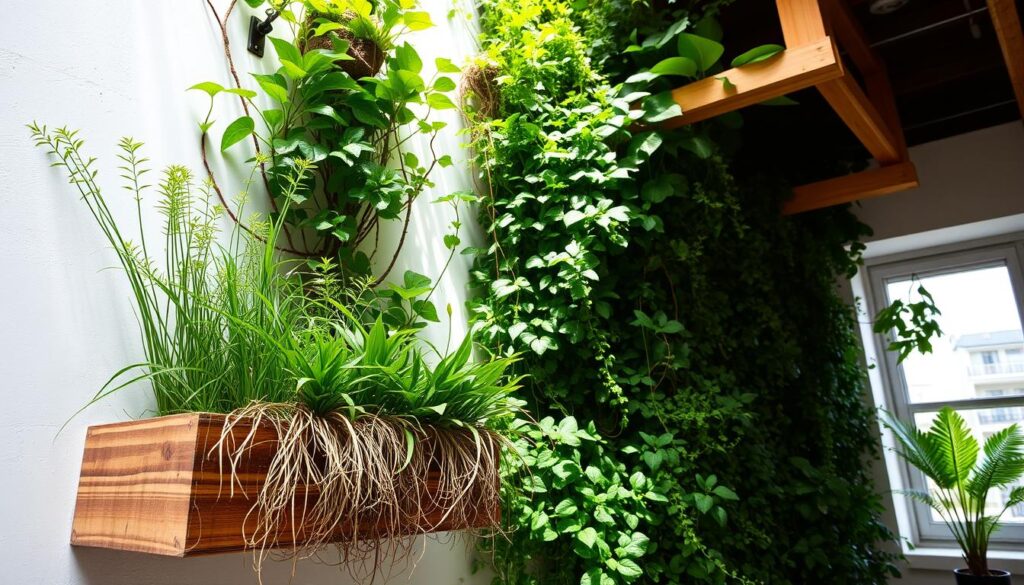
Planting Techniques and Optimal Spacing
Create X-shaped slits in the fabric using a utility knife – wide enough for root balls but snug enough to hold soil. Sustainable Home Magazine recommends:
- 4-6″ gaps between leafy greens
- 8-10″ spacing for herbs like rosemary
- Hammer-driven drainage holes every 18″
Gently tease roots apart before nestling plants into pockets. Secure loose fabric edges with plastic-coated staples – they withstand weather better than standard options. Water immediately using a gentle spray to settle soil.
Maintenance, Irrigation, and Seasonal Care
Install drip lines with adjustable emitters for precise watering. Morning irrigation reduces evaporation by 40% according to recent studies. Follow this seasonal guide:
| Season | Water Frequency | Key Task |
|---|---|---|
| Spring | Every 2 days | Add compost tea |
| Summer | Daily AM | Shade cloth install |
| Fall | 3x weekly | Trim spent growth |
Reinforce slats annually using exterior-grade screws. During frost warnings, wrap structures in burlap secured with plastic ties. Harvest outer leaves first to encourage continuous growth – you’ll enjoy fresh produce 10 months yearly!
Creative Ideas and Customizations for Your Pallet Garden
Personalizing your green space transforms it into a living art piece while boosting functionality. Start by enhancing your structure’s durability and style – a coat of milk paint or eco-stain protects the wood while adding personality. Choose non-toxic formulas in earthy tones that complement your home‘s exterior for seamless integration.
Design Strategies for Multi-Layered Beauty
Maximize your structure’s width by arranging plants in staggered rows. Place trailing nasturtiums at the top level, compact herbs like thyme in the middle, and vibrant succulents near the base. This tiered approach creates depth while ensuring each plant gets adequate sunlight.
Try these space-optimizing techniques:
- Alternate basil and parsley every 12″ for easy harvesting
- Use chalkboard paint on side panels for plant labels
- Install removable fabric panels for seasonal swaps
For year-round interest, rotate flowering plants with the seasons. Marigolds thrive in summer, while pansies add winter color. Sustainable Home Magazine found these rotations increase pollinator visits by 60% compared to static designs.
| Element | Function | Maintenance Tip |
|---|---|---|
| Trailing Flowers | Visual impact | Trim monthly |
| Aromatic Herbs | Pest control | Harvest weekly |
| Succulents | Low-water option | Check drainage |
Elevate your home improvement game by adding practical accents. Weave solar-powered LED strips through the framework for evening ambiance. Attach reclaimed tin cans as small tool holders – these touches make maintenance easier while showcasing your eco-conscious values.
Wrapping Up Your Pallet Garden Journey
Your eco-friendly transformation proves small spaces can yield big rewards. By repurposing materials and following Sustainable Home Magazine’s tested methods, you’ve created a living system that saves money and reduces waste. The process—from selecting chemical-free bases to installing drip irrigation—shows how thoughtful design meets practicality.
Maintain your planter’s vitality through seasonal adjustments. Swap leafy greens for cold-hardy succulents in winter, using their water-storing leaves as natural drought defenders. Summer invites vibrant blooms like nasturtiums, which double as edible garnishes. This rotation approach keeps your display fresh while supporting local pollinators.
Remember three keys for lasting success:
- Reinforce fabric liners annually with UV-resistant staples
- Refresh soil nutrients every 6-8 weeks using compost tea
- Experiment with vertical arrangements to maximize sunlight exposure
Your creation isn’t just a planter—it’s a way to reconnect with nature’s rhythms. Track growth patterns in a journal, noting which succulents or herbs thrive in specific pockets. Share cuttings with neighbors to spread sustainable practices, building community through greenery.
Ready to begin? Sustainable Home Magazine offers free mobile apps for tracking plant growth and scheduling maintenance. Start small with a single-column setup, then expand your way toward fuller vertical coverage. Every seedling planted strengthens both your ecosystem and eco-conscious mindset.

